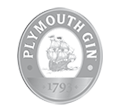![]() It’s a brave act to add a single word to all the many thousands that have been written about the Martini. Whole books have been written about it: cultural theories have been dedicated to it: people have come to blows about it. It is the most discussed, debated and praised cocktail in history. Only one thing can be said with complete confidence: the dry Martini is indisputably American.
It’s a brave act to add a single word to all the many thousands that have been written about the Martini. Whole books have been written about it: cultural theories have been dedicated to it: people have come to blows about it. It is the most discussed, debated and praised cocktail in history. Only one thing can be said with complete confidence: the dry Martini is indisputably American.
The humorist HL Mencken described it as ‘the only American invention as perfect as the sonnet’. And, to this day the last take of every Hollywood movie is always called the ‘Martini shot’ – the signal for everyone, from the big name star to the guy who holds the clapperboard, to celebrate in style.
Where the Martini came from, as with everything else to do with it, is a minefield of rumour and disinformation. It is likely that it was invented shortly after the end of the American Civil War since a drink called the Martinez was already popular enough to feature in 1880s bartenders’ manuals. In 1888 Harry Johnson’s famous manual was the first to spell it Martini. By the 1890s Martini had edged out Martinez and had become a standard recipe generally specifying a mixture of gum syrup, bitters, Old Tom Gin, red Italian Vermouth and a squeeze of lemon peel. Many light years away from the Dry Martini as we know it, but, significantly the union of Gin and Vermouth has been made.
Over time the recipe became less sweet. An 1893 recipe gives the proportions as 1 dash orange bitters, 2/3 Plymouth Gin, 1/3 French Vermouth. Plymouth is a dry, unsweetened Gin and French Vermouth is aromatic and also unsweetened. Confusingly this drink was described as a Marquerite, a name which shortly disappeared from bartenders’ menus. In 1910 a bartender, even more confusingly called Signor Martini, working at New York’s Knickerbocker Hotel was serving this combination as the Dry Martini and it has been known so ever since. By the 1950s and 60s the orange bitters had disappeared and the classic formula was fixed – Gin, French Vermouth, an olive and/or a twist of lemon. Although there was still plenty to argue about when it came to proportions but more of that.
Once upon a time you could walk into any bar in the world, order a Dry Martini and be served Gin but, even with Gin’s current revival, it is still not safe to assume that this is the case today. Throughout the ’70s and ’80s the dry Gin martini lost pole position mainly as the result of the emergence of Vodka as the cool drink. Because Vodka is completely neutral and colourless, it lends itself very well to a fantastic range of cocktails made with a variety of ingredients. What happened is that the word ‘Martini’ then came to define a category of drink and now can mean anything served in a Martini glass.
Fortunately for Gin lovers however, the classic Gin Martini is back in all its glory taking pride of place on the menu of every bar worth its salt. For a simple recipe that basically requires premium Gin and French, not Italian, Vermouth, one would think there’s not a lot to argue about. But debate has always raged as to the correct proportions of the ingredients. At one end of the divide are those who advocate a standard 4:1 Gin to Vermouth ratio. At the other are Martini aficionados like the film-maker Luis Bunuel who used to advise “simply allowing a ray of sunlight to shine through a bottle of Noilly Prat before it hits the bottle of Gin”. Winston Churchill reputedly used to bow in the direction of France before he poured his Gin into a glass and stuck an olive in it.
As palates have become more sophisticated, the current fashion for Dry Martinis is very dry indeed and at all top bars you’ll find it made in the following way:
Into a cold metal shaker filled with ice pour 1 tablespoon dry Vermouth to coat the ice. Strain off the excess Vermouth and pour in 7 fl oz of Gin. Stir, don’t shake, until ice-cold. Then strain into 2 cold Martini glasses and either zest the oil from 2 strips of lemon over each glass or garnish each drink with a single olive.
Even though minute quantities of Vermouth are used, a Gin Martini made this way still tastes remarkably different from neat Gin with an olive. There are lots of new variations on this formula. The Smoky Martini for example adds a dash of a 1/4 oz of whisky to float on the top instead of the lemon or olive, the Dirty Martini a splash of olive brine. Then there’s the Molotov, a basic dry martini with a lemon or orange twist flamed over the glass. The Cajun Martini mixes Gin infused with jalapeno chillies with dry Vermouth and a pepper garnish. Ask for any of these in a modern bar and the bartender will practically hug you as mixing a martini is the ultimate test of cocktail skill. It’s also a bit of a test of drinking skill and should be approached with caution. As the old joke goes “the Gin Martini is like a woman’s breasts because one is not enough and three is too many”. In our view however the Classic Gin Martini is the Little Black Dress of the cocktail world. You don’t wear it every day. You don’t even wear it at every party because sometimes you’re in the mood for something more colourful. But as soon as you’ve got it on, you realise that it was the right choice.




